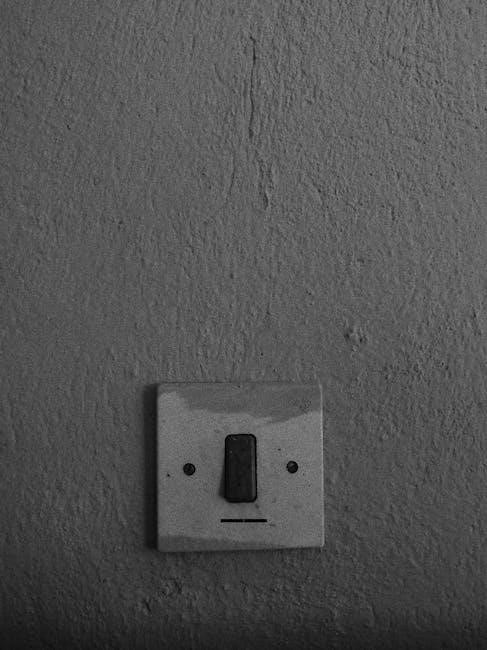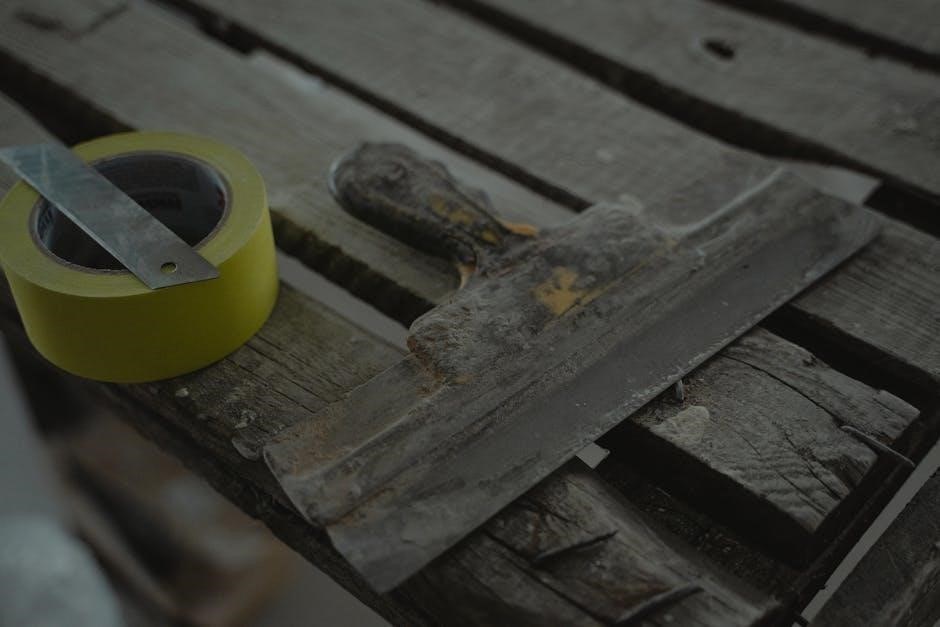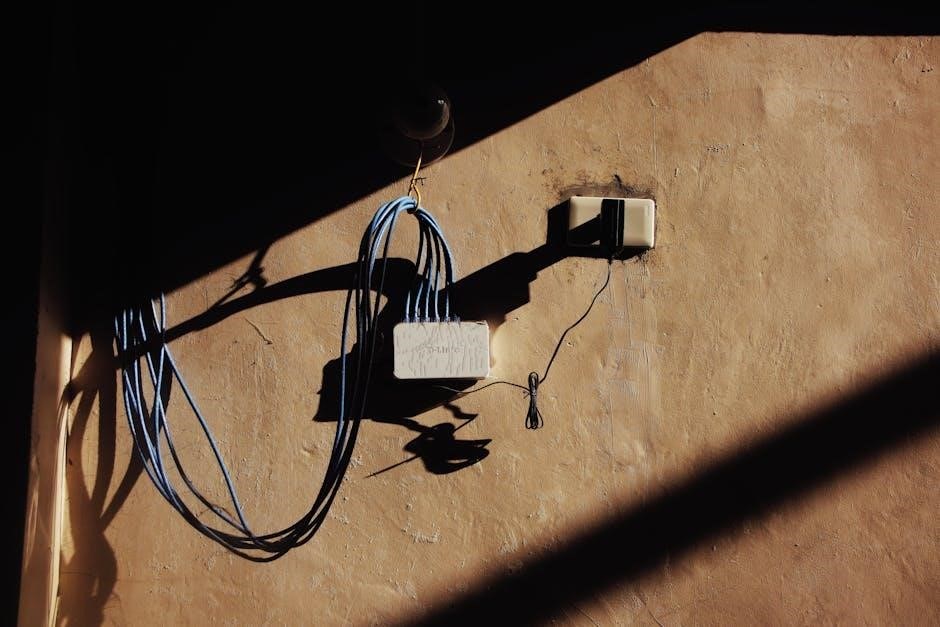Minka Aire Wall Switch Manual: A Comprehensive Guide
Minka Aire ceiling fans offer comfort and style, often controlled by intuitive wall switches. This guide provides a detailed overview to aid in understanding, operating, and maintaining your Minka Aire wall switch, ensuring optimal functionality and longevity.
Understanding Minka Aire Wall Switch Models
Minka Aire offers a variety of wall switch models designed to control their ceiling fans and lights. Understanding the specific model you have is crucial for proper operation and troubleshooting. These models often vary in features, such as fan speed settings, light dimming capabilities, and remote control compatibility. Some models also include a manual reverse switch for changing the fan’s direction.
Distinguishing between models like the WC210, WCS212, and WCS223 involves examining their physical appearance, button layouts, and any model numbers printed on the switch itself. The WCS212, for instance, is a universal touch control system with a learning frequency function to prevent interference.
Furthermore, compatibility with different types of ceiling fan motors (AC vs. DC) is a key consideration. Certain wall switches, particularly those designed for DC motor fans, should not be used with AC motor fans, as this can cause permanent damage to the fan’s remote control receiving unit. Consulting the Minka Aire website or product documentation is recommended for identifying your model.
Identifying Your Specific Wall Switch Model (WC210, WCS212, WCS223, etc.)

Accurately identifying your Minka Aire wall switch model is paramount for accessing the correct operating instructions and troubleshooting guidance. Several methods can be employed to determine the specific model number, such as WC210, WCS212, or WCS223. Begin by carefully examining the wall switch itself. The model number is often printed on the front or back of the unit, typically in small lettering.
If the model number isn’t readily visible, consult any original documentation that came with your ceiling fan or wall switch, including installation guides or warranty information. These documents usually contain the model number and other relevant specifications.
Another approach involves comparing your wall switch to images and descriptions of different Minka Aire models online. Pay close attention to the button layout, color, and any unique features of the switch. The WCS212, for example, is often described as a universal touch control system. If you are still unable to identify your wall switch model, contacting Minka Aire‘s customer support with a picture is recommended.
Basic Operation of Minka Aire Wall Switches
Understanding the basic operation of your Minka Aire wall switch is essential for controlling your ceiling fan effectively. The primary functions typically include fan speed adjustment and light control. Most Minka Aire wall switches feature separate buttons or touch controls for these functions.
For fan speed control, look for buttons labeled with speed levels, such as low, medium, and high, or a single button that cycles through the speeds. The light control usually consists of an on/off button or a dimmer switch that allows you to adjust the light intensity. Some models, like the Minka Aire WCS223, may also have a reverse function to change the fan’s direction.
To operate the fan, simply press the desired speed button. To turn the light on or off, press the light button. If your switch has a dimmer function, press and hold the light button to increase or decrease the brightness. Note that some Minka Aire DC motors have a built-in safety feature against obstructions during operation. Some wall switches also have remote control compatibility.
Installation Guide for Minka Aire Wall Switches
Installing a Minka Aire wall switch requires careful attention to detail and adherence to safety precautions. Before starting, turn off the power to the ceiling fan circuit at the breaker box to prevent electrical shock. Remove the existing wall plate and switch from the wall outlet box.
Identify the wires connected to the old switch and disconnect them. Typically, you’ll find wires for power, the fan, and the light. Connect the corresponding wires to the new Minka Aire wall switch according to the wiring diagram provided in the manual. If your outlet box has a ground wire (Green or Bare Copper), connect the wall transmitter’s ground wire to it. Otherwise, connect the wall transmitter wire directly to one of the screws from the outlet box.
Secure the wall switch into the outlet box and attach the wall plate. Restore power to the circuit at the breaker box. Test the switch to ensure the fan and light operate correctly. If you encounter any issues, double-check the wiring connections and consult the troubleshooting section of the manual. Ensure the light kit is left on the ON position and the fan can be controlled.

Wiring Diagram and Connections
Understanding the wiring diagram is crucial for the successful installation of your Minka Aire wall switch. The diagram illustrates how each wire from the switch should connect to the corresponding wires in your wall outlet box and to the ceiling fan receiver unit. Typically, you will encounter wires labeled for power (usually black), neutral (usually white), fan control (often blue), and light control (often yellow or another color).
Ensure that you correctly identify these wires using a voltage tester before making any connections. Incorrect wiring can damage the switch, the fan, or create a safety hazard. When connecting the wires, use wire connectors that are appropriate for the gauge of the wires. Twist the wires together securely before screwing on the connector.

If your wall outlet box has a ground wire (green or bare copper), connect it to the ground terminal on the switch. If there is no ground wire in the outlet box, you may need to consult with a qualified electrician to ensure proper grounding. Always refer to the specific wiring diagram included with your Minka Aire wall switch model, as wiring configurations can vary.
Troubleshooting Common Issues
When your Minka Aire wall switch encounters problems, a systematic approach to troubleshooting can save time and effort. Begin by checking the basics: ensure that the power supply to the fan and switch is active. A tripped circuit breaker is a common culprit. Next, verify that all wire connections are secure and properly connected according to the wiring diagram. Loose connections can lead to intermittent or complete failure of the switch’s functions.
If the fan or light does not respond to the switch, test the switch itself using a multimeter to confirm that it is sending the correct signals. If the switch is functioning correctly, the issue may lie with the fan’s receiver unit or the motor.
In cases where the fan operates erratically or at the wrong speed, check for any obstructions that might be interfering with the fan blades or the motor. Also, ensure that the frequency settings on the switch and the receiver unit are properly synchronized, as interference from other devices can sometimes cause issues. If problems persist, consulting the Minka Aire fan troubleshooting manual or seeking professional assistance is recommended.
Fan Speed Control Problems
Experiencing issues with your Minka Aire fan speed control can be frustrating, but many problems have simple solutions. If the fan does not respond to speed adjustments from the wall switch, start by verifying that the switch is properly connected and receiving power. A common cause is loose wiring, which can disrupt the signal transmission to the fan motor.
Another potential issue is interference from other devices operating on similar frequencies. If your wall switch uses a remote frequency function, ensure that it is correctly paired with the fan’s receiver. Try resetting the frequency to avoid conflicts with nearby electronics.
If the fan only operates at one speed or fails to reach its highest setting, the problem may be a faulty capacitor in the fan motor. Capacitors help regulate the voltage and current needed for different speeds. If the capacitor is defective, the fan may struggle to change speeds effectively. In such cases, replacing the capacitor or consulting a professional for motor repair is advisable. Always refer to your Minka Aire manual for specific troubleshooting steps.
Light Control Malfunctions
Light control malfunctions in your Minka Aire ceiling fan can stem from several factors, ranging from simple fixes to more complex issues. If the light does not turn on or off using the wall switch, the first step is to check the light bulb itself. Ensure it is properly screwed in and not burned out; If the bulb is functional, examine the wiring connections at the wall switch and within the fan’s light kit. Loose or corroded connections can disrupt the electrical flow, preventing the light from operating correctly.
Another common issue is a faulty dimmer switch. Minka Aire wall switches often include dimming capabilities, and if the dimmer component fails, it can cause the light to flicker, dim erratically, or not work at all. Replacing the dimmer switch may resolve these problems. For models with integrated remote control functionality, ensure the remote is properly synced with the fan’s receiver.
If the light operates independently of the wall switch, it could indicate a problem with the receiver unit inside the fan. This component interprets signals from the wall switch and controls the light accordingly. In such cases, consulting the Minka Aire troubleshooting manual or seeking professional assistance is recommended.

Remote Control Compatibility
Minka Aire ceiling fans often offer the convenience of remote control operation in addition to wall switch control. Understanding the compatibility between your wall switch and remote is crucial for seamless operation. Many Minka Aire wall switches are designed to work in conjunction with specific remote control models, ensuring that both can control the fan’s speed and light functions harmoniously.
To ensure compatibility, it’s essential to refer to your Minka Aire wall switch manual. The manual will specify the compatible remote control models and provide instructions on how to pair the remote with the wall switch and fan receiver. Typically, this involves setting a unique frequency code on both the remote and the receiver to prevent interference from other devices.
If you’re experiencing issues with remote control functionality, such as the remote not responding or inconsistent control, check the batteries in the remote. Ensure they are fresh and properly installed. Additionally, verify that the frequency code on the remote matches the code set on the receiver. If problems persist, consult the troubleshooting section of your Minka Aire manual or contact customer support for further assistance. Some universal remote options may exist.
Safety Precautions and Warnings
Working with electrical components, such as Minka Aire wall switches, requires strict adherence to safety precautions to prevent injury or damage. Before beginning any installation, repair, or troubleshooting, always disconnect power at the circuit breaker to avoid electrical shock. Ensure the work area is dry and free of obstructions.
When handling wiring, use appropriate insulated tools and wear safety glasses to protect your eyes. Never exceed the specified voltage or amperage ratings of the wall switch or fan, as overloading can cause fire hazards. If you are unfamiliar with electrical work, it is highly recommended to consult a qualified electrician.
Avoid installing Minka Aire wall switches in damp or wet locations, as moisture can lead to electrical shorts and corrosion. Regularly inspect the wall switch and wiring for any signs of damage, such as frayed wires or cracked casings. Replace any damaged components immediately. Keep the wall switch clean and free of dust and debris to ensure proper operation and prevent overheating. If you are unsure seek professional help.
